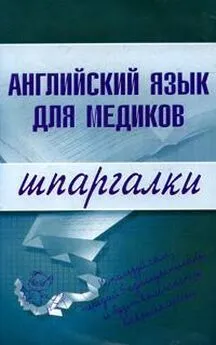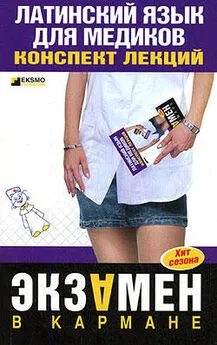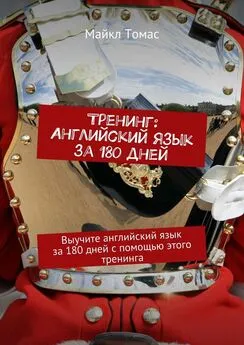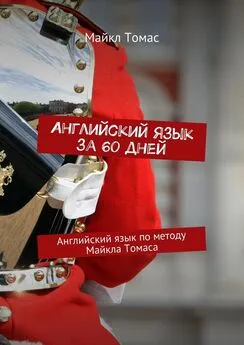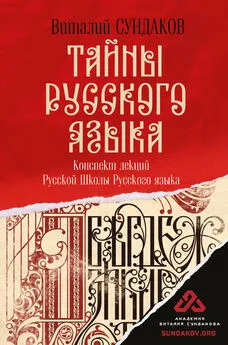Английский язык для медиков: конспект лекций
- Название:Английский язык для медиков: конспект лекций
- Автор:
- Жанр:
- Издательство:Array Литагент «Научная книга»
- Год:2007
- Город:Москва
- ISBN:978-5-699-20181-5
- Рейтинг:
- Избранное:Добавить в избранное
-
Отзывы:
-
Ваша оценка:
Английский язык для медиков: конспект лекций краткое содержание
Английский язык для медиков: конспект лекций - читать онлайн бесплатно ознакомительный отрывок
Интервал:
Закладка:
In addition to the periosteum, all bones have another membrane, the endosteum. It lines the marrow cavity as well as the smaller cavities within the bone. This membrane, like the inner layer of the periosteum, contains osteoblasts, and is important in the formation of new bone tissue.
Bone tissue consists largely of a hard substance called the matrix. Embedded in the matrix are the bone cells, or osteocytes. Bone matrix consists of both organic and inorganic materials. The organic portion is made up chiefly of collagen fibres. The inorganic portion of matrix constitutes about two thirds of a bone's total weight. The chief inorganic substance is calcium phosphate, which is responsible for the bone's hardness. If the calcium were removed from a bone, the bone would loose its rigidity and become flexible. If the organic portion were burned out, or calcined, the bone would retain its shape but crumble under the slightest pressure. In the formation of intramembraneous bone, certain cells of the embryonic connective tissue congregate in the area where the bone is to form. Small blood vessels soon invade the area, and the cells, which have clustered in strands, undergo certain changes to become osteoblasts. The cells then begin secreting collagen fibers and an intercellular substance. This substance, together with the collagen fibers and the connective tissue fibers already present, is called osteoid. Osteoid is very soft and flexible, but as mineral salts are deposited it becomes hard matrix. The formation of endochondral bone is preceded by the formation of a cartilaginous structure similar in shape to the resulting bone. In a long bone, ossification begins in the area that becomes the center of the shaft. In this area, cartilage cells become osteo-blasts and start forming bone tissue in the same manner as intramem-braneous bone is formed. This process spreads toward either end of the bone, but while this is happening the cartilage cells at each end also become osteoblasts and start forming bone. The only areas where cartilage is not soon replaced by bone tissue are the regions where the shaft joins the two epiphyses. These areas, called epiphyseal plares, are responsible for the bone's continuing growth in length, As the bone grows, each epiphyseal plate forms new cartilage, which is then replaced by bone. When the epiphyseal plates stop forming cartilage, the bone stops growing. The bone's growth in diameter is due to the addition of layers of bone around the outside of the shaft. As they are formed, layers of bone on the inside of the shaft are removed. Thus, when a long bone grows in diameter, the compact bone of the shaft does not get thicker, but the marrow cavity gets larger. In all bones, the matrix is arranged in layers called lamellae. In compact bone, the lamellae are arranged concentrically around blood vessels, and the space containing each blood vessel is called a Haversian canal. The osteocytes are located between the lamellae, and the canaliculi containing their cellular extensions connect with the Haversian canals, allowing the passage of nutrients and other materials between the cells and the blood vessels. Besides the blood vessels in the Haversian canals, bone tissue contains many smaller blood vessels that extend from the periosteum and enter the bone through small openings called canals of Volkmann. These vessels lead to those in the Haversian canals. In long bones there is an additional blood supply, the nutrient artery, which represents the chief blood supply to the marrow. The structure of spongy is similar to that of compact bone. However, there are fewer Haversian canals, and the lamellae are arranged in a less regular fashion, forming spicules and strands known as trabeculae.
New words
bone – кость
in addition – в дополнение
to serve – служить
to protect – защищать
internal – внешний
calcium – кальций
phosphorus – фосфор
inside – внутри
major – главный
red – красный
white – белый
blood cells – кровяные клетки
age – возраст
sex – пол
changes – перемены
to tend – иметь тенденцию
atrophy – атрофия
spongy – губчатый
outer – внешний
tendon – сухожилие
ligament – связка
responsible – ответственный, надежный
inner – внутренний
flexible – гибкий
periosteum – надкостница
osteoblast – остеобласт (клетка, образующая кость)
rigidity – неподвижность
to retain – удерживать, сохранять
shape – движение
but – но
to crumble – крошиться
to congregate – собираться
epiphyseal – относящийся к эпифизу
shaft – ствол, тело (длинной) кости, диафиз
spicules – выросты, отростки
strand – пучок
known as – известный как
Перед названиями месяцев и дней недели артикль не употребляется.
School begins in September.
We rest on Sunday.
Запомните следующие застывшие словосочетания.
After – work
After – school
From – work
From – school
Перед порядковыми числительными употребляется определенный артикль.
Our classroom is on the second floor.
Today is the tenth of May.
Вставьте артикль, где необходимо.
Конец ознакомительного фрагмента.
Текст предоставлен ООО «ЛитРес».
Прочитайте эту книгу целиком, купив полную легальную версию на ЛитРес.
Безопасно оплатить книгу можно банковской картой Visa, MasterCard, Maestro, со счета мобильного телефона, с платежного терминала, в салоне МТС или Связной, через PayPal, WebMoney, Яндекс.Деньги, QIWI Кошелек, бонусными картами или другим удобным Вам способом.
Интервал:
Закладка:

